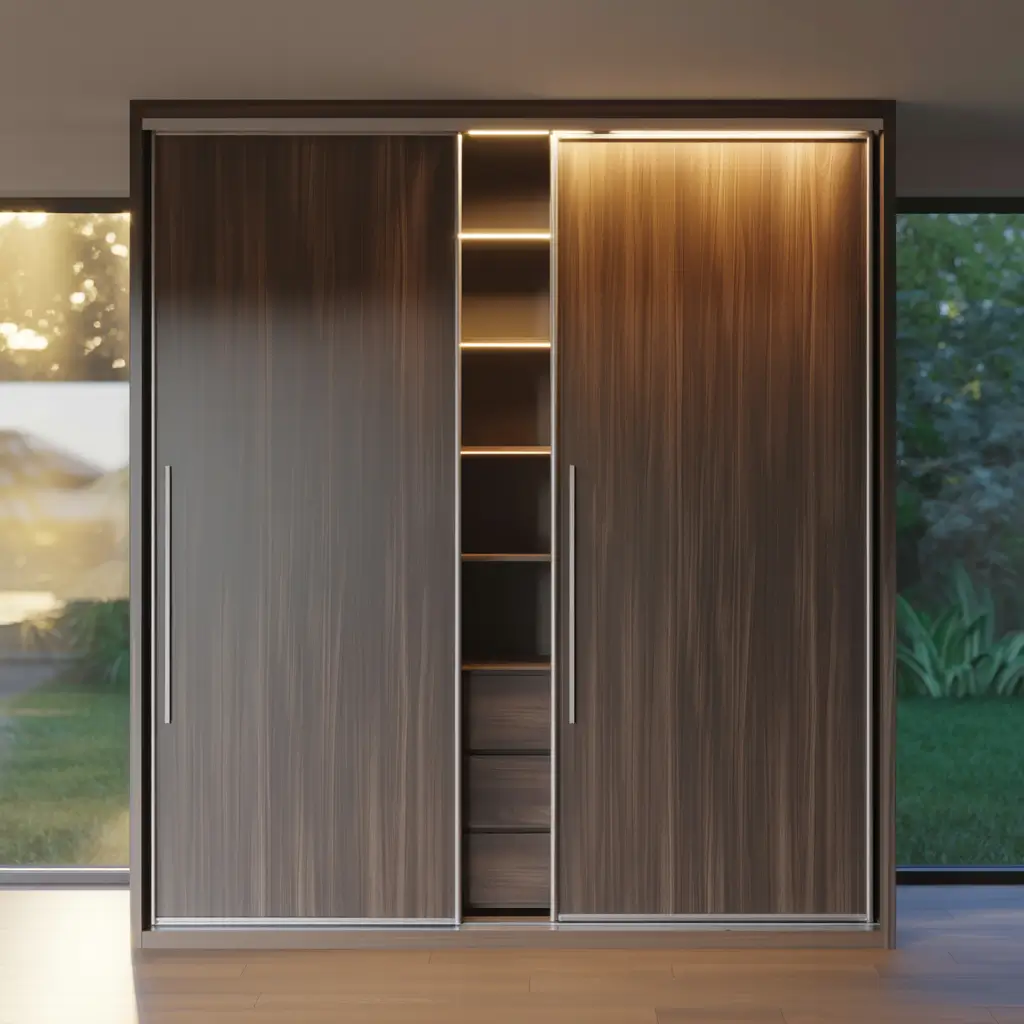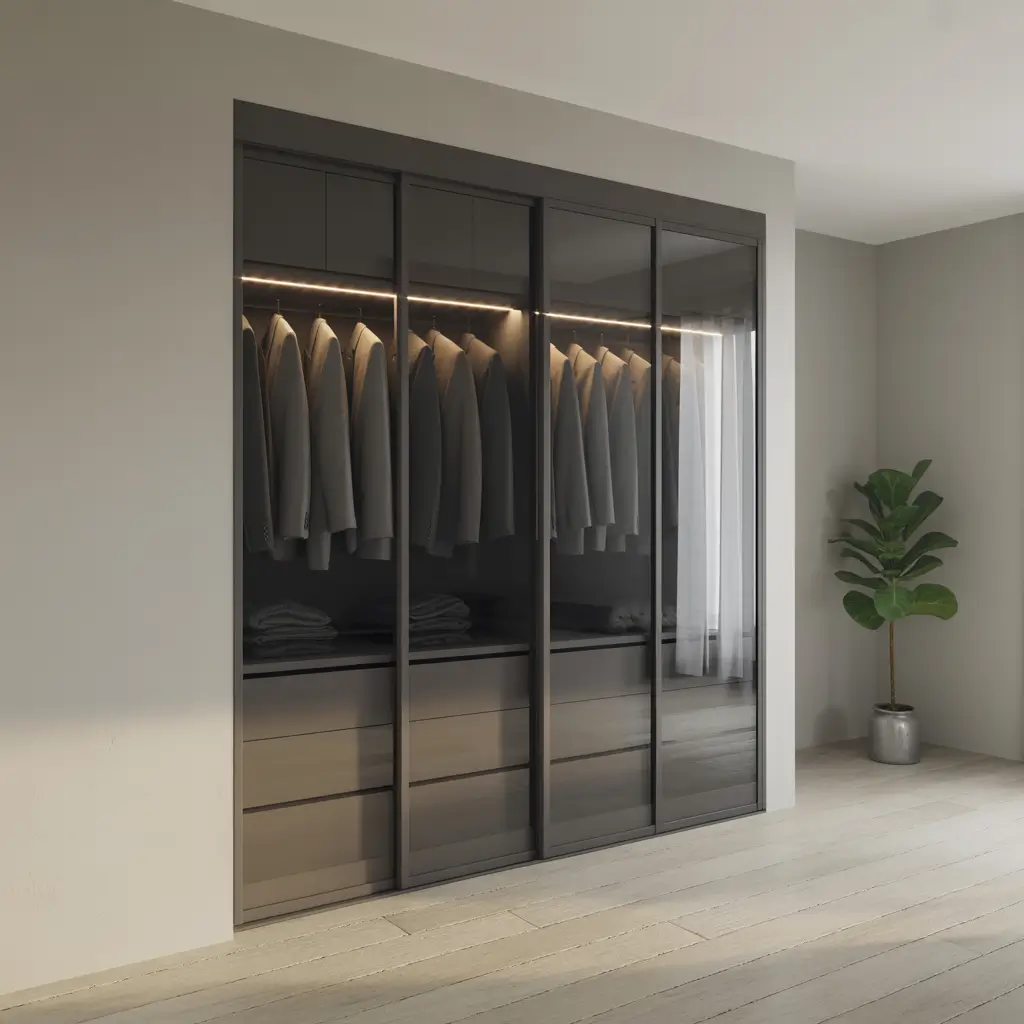15 Amazing School Hallway Ideas and Creative Student Displays
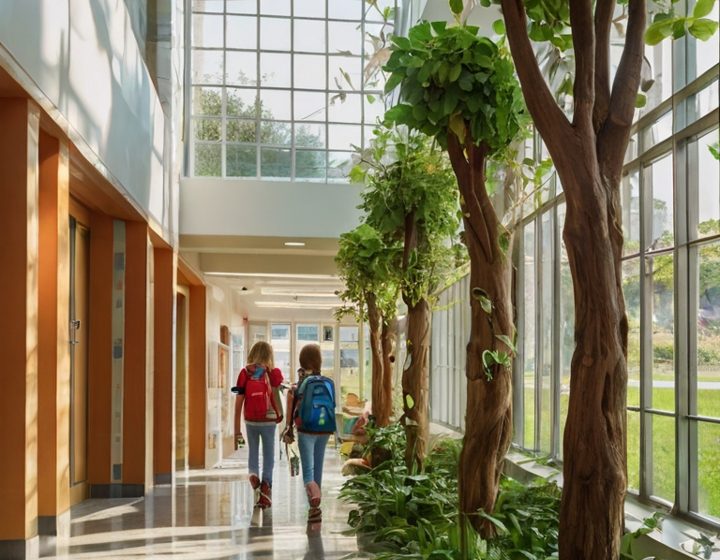
Remember walking through those drab, beige school hallways that felt about as inspiring as watching paint dry? Yeah, me too. But here’s the thing – school hallways don’t have to be soul-sucking voids where kids shuffle from class to class like zombies. These spaces pack serious potential for creating environments that actually make students want to stop and engage.
I’ve spent years working with schools to transform their corridors, and let me tell you, the difference a thoughtfully designed hallway makes is mind-blowing. We’re talking about spaces that become extensions of the classroom, places where learning happens organically, and spots where school culture truly shines. Ready to turn those boring walls into something spectacular?
Interactive Learning Walls
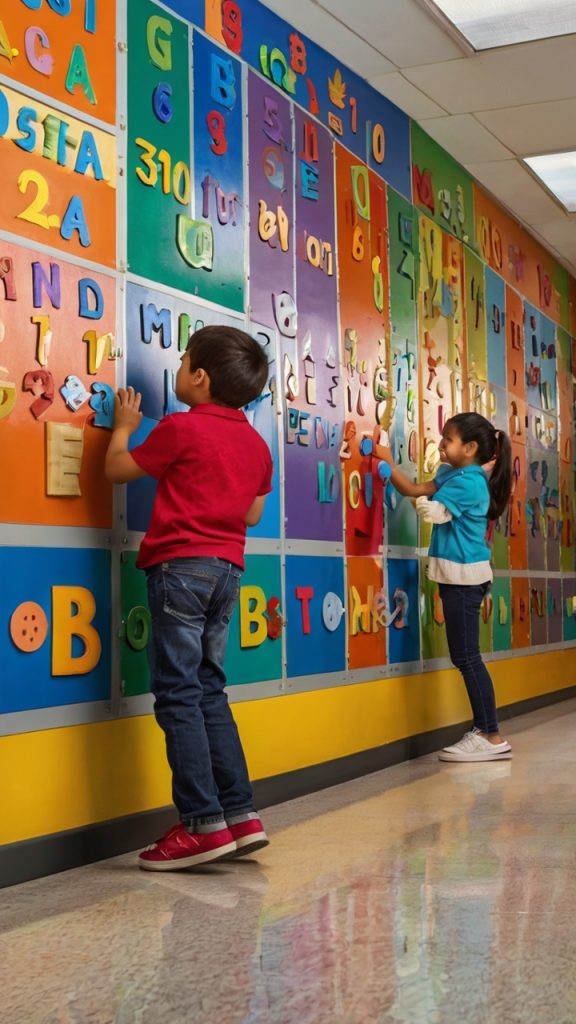
Making Walls Work Harder Than Your Coffee Machine
Interactive learning walls completely change the game when it comes to hallway engagement. Think beyond static posters – we’re talking about surfaces that beg to be touched, manipulated, and explored. I installed my first interactive wall five years ago, and watching kids literally run to interact with it still makes me smile.
You can create these walls using simple materials like magnetic paint, whiteboard panels, or even velcro strips. The magic happens when you add movable elements that students can rearrange to solve problems or create patterns. One school I worked with installed a massive math wall where kids could physically move numbers around to solve equations during passing periods.
Key elements for successful interactive walls:
- Durable, wipeable surfaces that handle daily abuse
- Age-appropriate challenges that rotate weekly
- Clear instructions posted at kid-eye level
- Storage pockets for loose pieces
Want to know what really works? QR codes linking to tutorial videos or extended challenges. Students scan them with their phones (yes, even elementary kids have them now) and boom – instant engagement that extends beyond the physical wall.
Seasonal Hallway Themes

Because Who Doesn’t Love a Good Theme Party?
Seasonal themes transform hallways faster than you can say “pumpkin spice latte.” But here’s where most schools mess up – they think seasonal means slapping up some paper snowflakes and calling it a day. Nope. We’re going full transformation mode here.
I remember walking into a school last October where they’d turned their main hallway into a literary haunted house. Each classroom door featured a different spooky book cover, complete with student-written reviews. The ceiling had floating “ghost stories” – literally white sheets with famous opening lines from mystery novels. Genius, right?
The beauty of seasonal themes lies in their temporary nature. You get four to six major transformation opportunities per year without committing to permanent changes. Plus, students actually anticipate what’s coming next. How often does that happen with hallway decor?
Making Seasonal Themes Educational (Not Just Pretty)
Your autumn hallway shouldn’t just feature leaves – incorporate science lessons about photosynthesis. Winter themes can explore how different cultures celebrate holidays. Spring becomes a chance to showcase growth cycles and poetry. Summer themes? Perfect for highlighting vacation reading lists or exploring geography through travel destinations.
Student Artwork Gallery
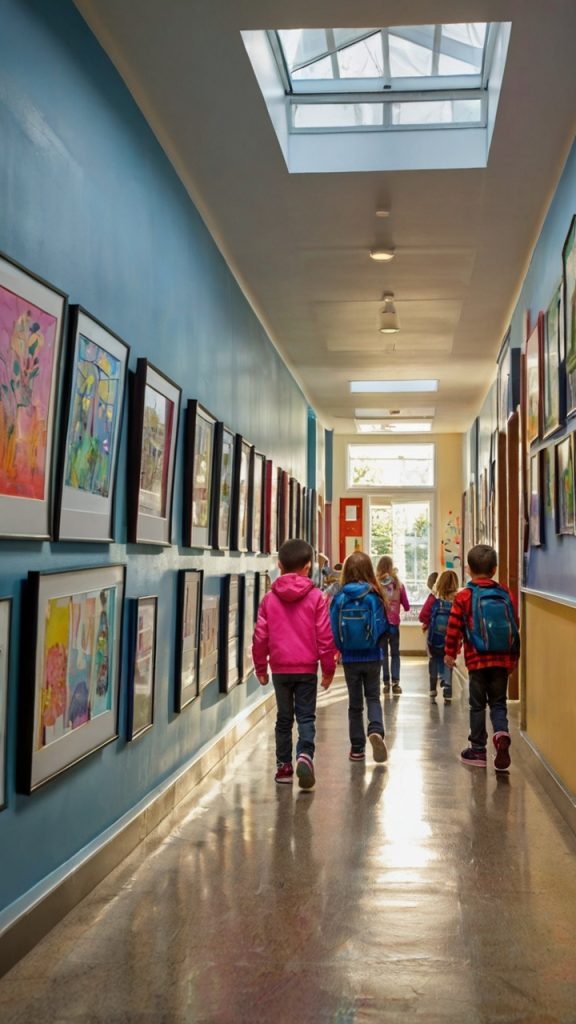
Ever notice how kids light up when they see their work displayed? Creating a proper student gallery transforms hallways into confidence-building showcases. And no, I’m not talking about that sad cork strip with curling papers held up by rusty thumbtacks.
Professional-looking displays make all the difference. I helped one school install a gallery rail system (like you’d see in actual galleries) for under $200. They use proper frames from the dollar store, rotating artwork monthly. The result? Students treat the space with respect because it looks legit.
Gallery Best Practices That Actually Work
Frame everything – even kindergarten finger paintings look museum-worthy behind glass. Create typed labels with the artist’s name, grade, and artwork title. Install adjustable spotlights if your budget allows (LED strips work great too). Most importantly, host actual gallery openings where families can attend and students can discuss their work.
Don’t limit galleries to just visual art either. Display creative writing pieces, science fair projects, or photography. One middle school I know created a “Mistakes Gallery” showcasing failed experiments and what students learned from them. Talk about growth mindset in action!
Also Read: 15 Beautiful Hallway Lighting Ideas for Modern Interiors
Motivational Quote Displays

Beyond “Hang In There” Cat Posters
Look, we need to talk about motivational quotes. Done wrong, they’re cheesier than a Wisconsin dairy farm. Done right? They actually inspire action and reflection. The trick lies in making them visually striking and contextually relevant.
Skip the generic Pinterest quotes everybody’s seen a million times. Instead, source quotes from people your students actually know or admire. Athletes, YouTubers, local heroes – whoever resonates with your specific population. I worked with one school that surveyed students about their role models, then created quote displays featuring those exact people.
Typography matters more than you think. Bold, modern fonts grab attention way better than Comic Sans (please, for the love of education, stop using Comic Sans). Mix different display methods – vinyl lettering, light boxes, even chalk art if you’ve got someone with skills.
Interactive Quote Installations
Why not make quotes interactive? Install a “Quote of the Week” board where students can submit their favorites. Create fill-in-the-blank motivational statements students complete with dry-erase markers. Set up a “Words of Wisdom” recording station where kids can leave audio messages for future students.
Color-Coded Subject Zones

Organization That Makes Sense (Finally!)
Color-coding hallways by subject area seems obvious, yet most schools still haven’t caught on. Each academic department gets its own color scheme, making navigation intuitive and creating distinct learning environments. The science wing becomes green, math goes blue, English rocks red – you get the idea.
But here’s where it gets interesting. Don’t just paint walls and call it done. Extend the color coding to everything – floor tiles, lockers, even ceiling tiles if you’re feeling ambitious. I’ve seen schools use colored LED strips that change based on the time of day or upcoming events in that department.
This system helps everyone, especially new students or visitors. Can’t find the history classroom? Follow the yellow brick road (literally). Plus, it creates natural gathering spaces where subject-area teachers can showcase relevant work.
Subject-Specific Design Elements
Math hallways feature geometric patterns and famous equations. Science corridors showcase the periodic table or ecosystem murals. Language arts areas display literary timelines or grammar rules disguised as art. Make the decoration educational without being preachy.
3D Bulletin Board Designs

Regular bulletin boards are so 2010. Three-dimensional displays literally pop off the wall, demanding attention in ways flat boards never could. And before you panic about budgets – most 3D elements cost next to nothing to create.
Paper sculpture techniques transform ordinary construction paper into eye-catching displays. One art teacher showed me how she creates entire cityscapes using folded paper and strategic lighting. The shadows alone make people stop and stare. FYI, YouTube has tons of tutorials if you’re not naturally crafty 🙂
Materials That Add Dimension Without Breaking Banks
Pool noodles become instant 3D frames or sculptural elements. Cardboard boxes create depth and shadow boxes for displays. Fabric adds texture and movement (especially near air vents). Even plastic cups arranged in grids create stunning pixelated images when viewed from a distance.
The secret sauce? Layering different heights and materials to create visual interest. Think theater set design rather than flat poster. Students can contribute elements, making it a collaborative project that grows over time.
Also Read: 15 Inspiring Long Hallway Decorating Ideas for Modern Homes
Hallway Reading Nooks
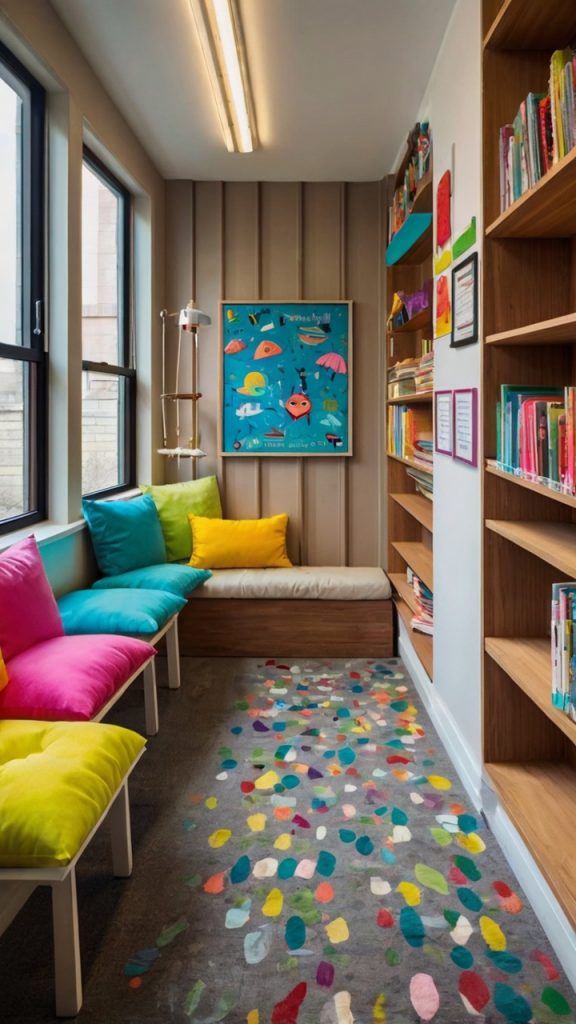
Cozy Corners That Actually Get Used
Who says reading only happens in libraries? Strategic placement of comfortable seating and good lighting transforms dead hallway space into reading refuges. I’m talking about those awkward alcoves and weird corners every school has – perfect spots for creating intimate reading spaces.
Start small with a couple of bean bags and a bookshelf. See how students respond before going all-in. One elementary school I visited built amazing reading pods using large cardboard tubes (think concrete form tubes from hardware stores). Kids crawl inside with books and flashlights – instant magic.
Essential Elements for Hallway Reading Success
Good lighting trumps everything else – nobody wants to read in a cave. Install battery-operated LED strips if electrical work isn’t possible. Provide variety in seating options because not everyone likes bean bags. Include a “take a book, leave a book” station to keep content fresh. Most importantly, establish clear expectations about when these spaces can be used.
Consider themed nooks based on grade levels or genres. A “Graphic Novel Grotto” for middle schoolers or a “Picture Book Paradise” for younger kids. Change decorations seasonally but keep the core comfortable elements consistent.
Alphabet & Number Murals
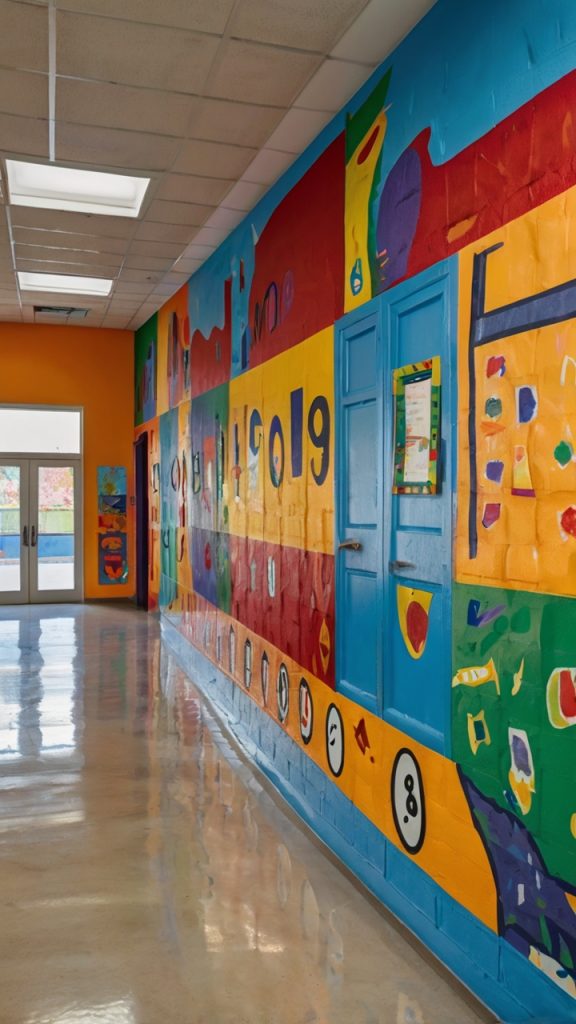
Making Basics Beautiful (And Functional)
Elementary hallways especially benefit from alphabet and number displays, but please – let’s evolve beyond those tired classroom border strips. Modern murals combine learning with legitimate art, creating Instagram-worthy walls that happen to be educational.
I commissioned a local artist to create an alphabet mural where each letter transformed into an animal. Cost? Less than $500 including materials. Impact? Priceless. Kids trace letters with their fingers every single day. Parents take photos during school events. It became the school’s signature feature.
Number murals work brilliantly when you incorporate real-world applications. Show numbers in different languages, historical number systems, or mathematical sequences. One school created a number line stretching their entire main hallway – students literally walk through math concepts.
Interactive Elements That Stick
Magnetic boards underneath painted numbers let kids attach objects for counting. Textured letters help kinesthetic learners. QR codes link to songs or videos about each letter or number. The goal? Multiple learning modalities in one installation.
School Spirit Wall
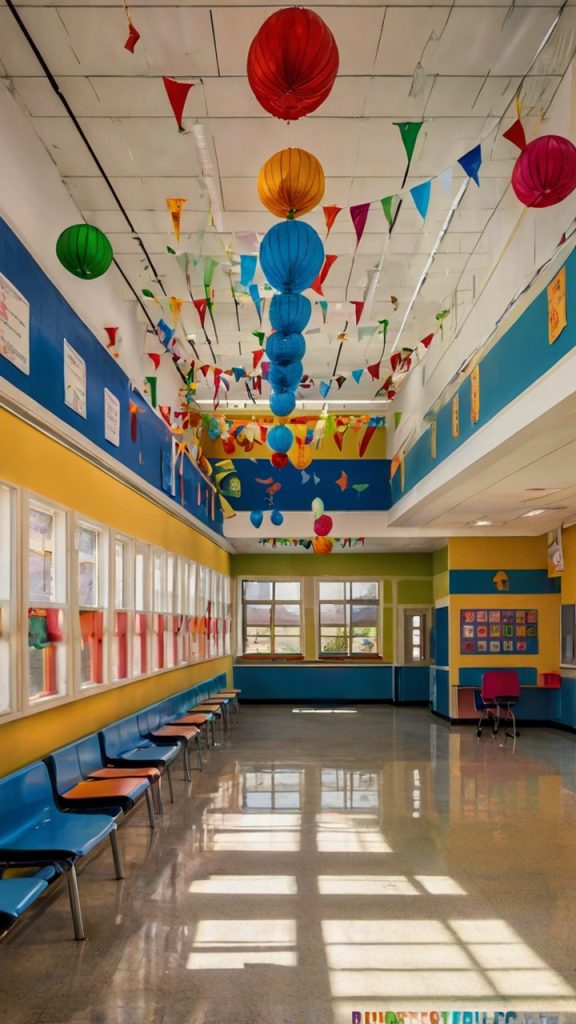
School spirit walls unite communities faster than Friday night football games. But instead of just hanging pennants and calling it good, create dynamic displays celebrating what makes your school unique. This becomes your school’s highlight reel, constantly evolving with new achievements.
Include a mix of historical elements and current accomplishments. Display trophies, sure, but also showcase academic achievements, community service projects, and individual student successes. One high school I know created a “Wall of Dreams” where graduating seniors leave their college acceptance letters and future plans.
Elements That Build Real Pride
Digital displays showing rotating student achievements work wonders. Alumni success stories inspire current students. Photo walls featuring every student and staff member create instant belonging. Interactive elements like “Pin Your Hometown” maps celebrate diversity.
Update these walls constantly. Nothing kills spirit faster than outdated displays showing achievements from five years ago. Assign a student committee to manage updates – they’ll take ownership and ensure relevance.
Also Read: 15 Creative Hallway Decorating Ideas That Inspire Style
Nature-Inspired Hallways

Bringing Outside In (Without the Mess)
Nature-themed hallways reduce stress and improve focus – science backs this up. But we’re not talking about those cheesy foam trees from teacher supply stores. Think immersive environments that transport students.
Start with color psychology. Soft greens and blues calm anxious minds. Add natural textures through cork boards, bamboo panels, or reclaimed wood accents. Install grow lights with actual plants if maintenance is feasible. One school created a “living wall” using low-maintenance succulents in a grid pattern.
Sustainable and Educational Approaches
Partner with science classes to maintain hallway gardens. Display information about local ecosystems or environmental challenges. Create seasonal displays using pressed leaves or flower arrangements students collect. Make it educational, not just decorative.
Consider sound elements too. Small water features or nature sound speakers during passing periods create surprisingly calming transitions. Just keep volumes reasonable – nobody needs thunderstorm sounds at concert levels.
Cultural Celebration Displays

Diversity That Goes Deeper Than Food Days
Cultural displays should celebrate year-round, not just during designated months. Create permanent installations that rotate content, ensuring all students see themselves represented. This isn’t about checking boxes – it’s about building inclusive communities.
Map installations showing where families originate tell powerful stories. “Hello” walls displaying greetings in every language spoken at your school create instant connections. Student-created cultural artifacts or presentations add authenticity traditional decorations lack.
Avoiding Common Pitfalls
Don’t let displays become stereotypical or frozen in time. Modern cultural representation shows how traditions evolve and blend. Include student voices explaining what their culture means to them personally. Update regularly and involve cultural community members in planning displays.
One middle school created “Cultural Ambassador” positions where students share monthly presentations about their heritage. These get displayed in hallways with QR codes linking to video presentations. Engagement through education – that’s the sweet spot.
DIY Wall Decals & Stickers

Customization Without Commitment (Or Damage)
Removable wall decals revolutionize hallway decoration, especially for schools with strict painting policies. Modern vinyl options look professional and last years without damaging surfaces. Plus, students can help design and install them.
Create custom decals using online services or in-house vinyl cutters (if your art department has one). School logos, mascots, inspirational words, or subject-specific graphics – anything works. IMO, the ability to change them seasonally or for special events makes them worth the investment.
Design Tips That Pop
Layer different sizes and colors for visual depth. Create optical illusions with perspective designs. Use metallic or holographic vinyls for extra impact. Position decals at various heights to engage different age groups.
Don’t forget functional decals like arrows for navigation or footprints showing walking patterns. One elementary school created an entire “follow the path” game using floor decals that lead to different learning stations.
Hallway Timeline of History
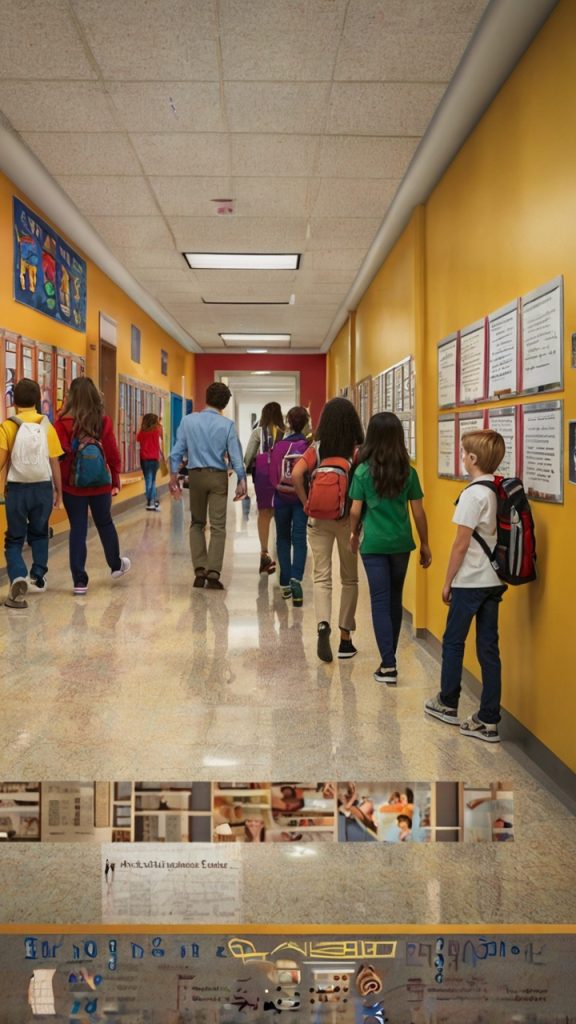
Making Time Travel Possible (Sort Of)
History timelines in hallways teach constantly, even when students aren’t consciously learning. Create comprehensive timelines that span entire corridors, allowing students to literally walk through time. This works for world history, local history, or subject-specific timelines.
Use consistent scaling so students understand relative time periods. Include diverse perspectives and voices – history isn’t just about famous dead white guys anymore. Add QR codes linking to primary sources or videos for deeper exploration.
Interactive Timeline Elements
Install flip panels revealing “then and now” comparisons. Create “What happened in your birth year?” displays updated annually. Add student research projects to expand the timeline. Make it personal and relevant to your specific community.
Consider vertical timelines on stairwells or spiral timelines around corners. One school created a music history timeline with QR codes playing song snippets from each era. Students literally hear history as they walk.
Inspirational Career Corner
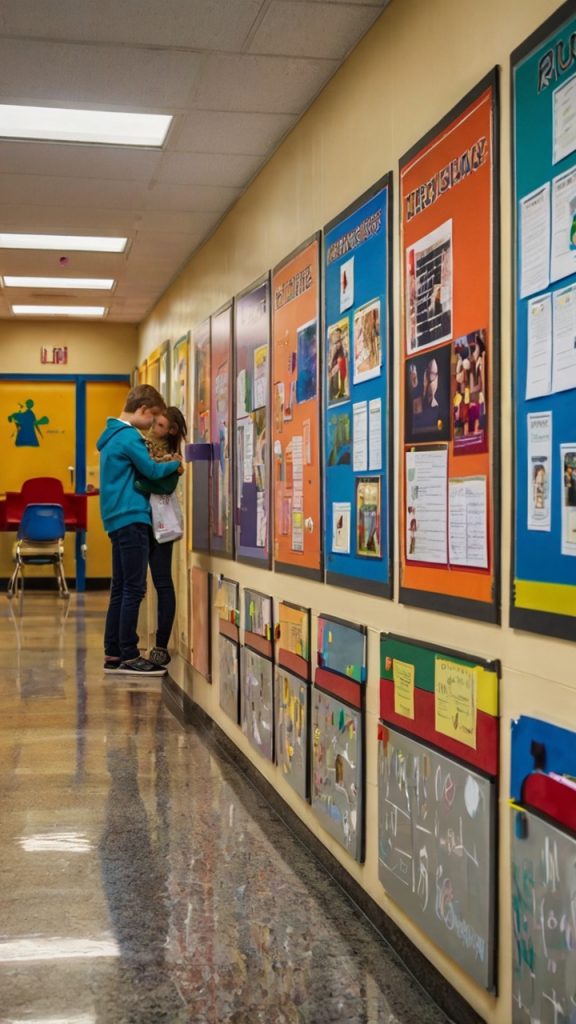
Future Planning That Doesn’t Feel Preachy
Career corners in hallways plant seeds without forcing decisions. Showcase diverse career paths through engaging displays that go beyond the typical doctor-lawyer-teacher trinity. Include emerging careers students might not know exist.
Feature alumni in various careers through photo displays and quotes. Create “Day in the Life” installations showing typical workdays in different professions. Display required education paths without making college seem like the only option.
Making Careers Tangible
Install interactive elements like “Match Your Interests to Careers” boards. Display actual tools or equipment from different professions (borrowed from parents or community members). Create rotating featured career months with deep dives into specific fields.
Partner with local businesses for “Career Artifacts” displays. Real stethoscopes, architect blueprints, or chef tools make careers feel attainable. Include salary ranges and job outlook data – kids appreciate honesty about financial realities.
Hands-On STEM Stations

Science Everywhere (Literally)
STEM stations in hallways prove learning happens anywhere. Install permanent stations with rotating challenges that students can engage with during transitions. These aren’t full experiments – think quick, hands-on activities that demonstrate concepts.
Marble runs teaching physics concepts work brilliantly. Simple machine demonstrations using pulleys and levers engage all ages. Magnetic poetry walls with science vocabulary combine literacy and STEM. Even basic building blocks in designated areas foster engineering thinking.
Safety and Sustainability First
Choose activities that don’t require supervision or consumable materials. Ensure installations meet safety codes and won’t create traffic jams. Design challenges that reset automatically or require minimal maintenance.
Create observation stations with microscopes showing prepared slides (changed weekly). Install engineering challenge boards where students submit solutions to monthly problems. Add coding unplugged activities using physical programming boards. The possibilities stretch as far as your imagination :/
Making It All Work Together
Here’s the thing about transforming school hallways – you don’t need to implement all 15 ideas at once. Start with one or two that resonate with your school’s culture and build from there. The best hallway transformations happen organically, responding to student needs and interests rather than following rigid plans.
Remember, these spaces belong to students. Involve them in planning, creation, and maintenance. When kids take ownership, magic happens. They’ll protect what they’ve helped create and constantly contribute new ideas.
Budget constraints? Every single idea I’ve shared can be modified to fit whatever resources you have. Some of the most impactful hallway transformations I’ve seen cost less than a single textbook set. Creativity trumps cash every time.
The goal isn’t perfection – it’s progress. Your hallways should evolve constantly, reflecting your school’s growth and changing needs. What works in September might need tweaking by February, and that’s totally fine. Stay flexible, keep experimenting, and watch your corridors transform from forgotten spaces into vibrant learning environments.
Take that first step. Pick one idea that excites you and run with it. Your students deserve hallways that inspire, educate, and celebrate their journey. And honestly? Once you see their faces light up at that first transformation, you’ll be hooked on making every square foot of your school count.
Who knew hallways could be this exciting, right?

